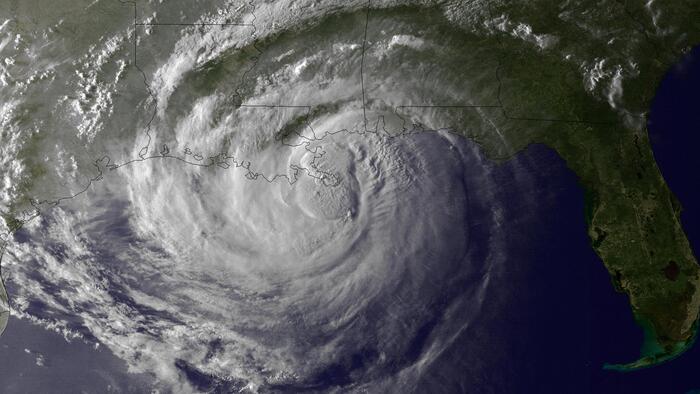When the first solid data from the 2022 Census was released a few days ago, which INDEC called "provisional", the expectation for the number of inhabitants of Argentina (46 million, they confirmed) was tempered by a certain disappointment, given the limited compendium diffused.
The 80-page report included basic population and housing figures.
Among them, there is one that is worth looking closely at:
people living on the streets
.
On May 17, the specific operation for this issue counted 2,962 people living on the streets throughout the country.
The figure is small, considering the information that previously circulated on the subject.
On the one hand, other official jurisdictional data.
On the other, the estimates of scholars on the subject, which in turn collect information from NGOs, organizations that tend to have a more fluid territorial arrival than that of the State itself.
In any case, the number 2,962 carries two important asterisks that will be described below.
Homeless people, provisional data
The first footnote came from INDEC.
They assured this medium that the definitive number of people living on the streets "is not yet there."
The form that the census takers filled out during the day of May 18.
Photo: Jose Gutierrez
They allege that many people in this situation were not -literally- on the street on May 16 (when that specific operation was carried out), but that on May 17 (the day of the national census itself), they were relieved in hostels or
shelters
.
Thus, instead of considering them "homeless people", they were included in the "people in collective housing" category.
In the INDEC they assure that when this last figure is separated into subcategories (“disaggregated”, they say), those who were in nursing homes will be left on one side;
people in jails, on the other;
and those who are on the streets, in the corresponding section.
Thus, they estimate, the figure of almost 3,000 people living on the streets will be higher.
They don't know how much bigger
.
And they did not confirm when they will disaggregate the data.
Where to locate people on the street
A curious fact that depends on the above cannot be omitted, and that speaks of the institutional difficulties to consider a population as neglected and that -it is evident- is uncomfortable to address.
Marco Lavagna in the announcement of the preliminary results of the 2022 Census. Photo: Juan Manuel Foglia
Just as in this census, a part of these people appears statistically "mixed" in the category "people in collective dwellings", in previous censuses, for example that of 2010, people in this situation were not counted.
However, they appeared in a footnote.
Surprisingly, it had been decided to record them as follows: "
People living on the streets are considered to be part of the population living in private homes
."
It should be remembered that if the 2022 census counted (for the first time) this population, it was thanks to the departure of Law 27,654, sanctioned on December 25, 2021.
It would be necessary to be pending compliance with article 13 of this new regulation, since it obliges the Ministry of Social Development and the INDEC (national and its provincial representatives), within a period of 180 days from the publication of the law, to relieve the street population.
But, in addition, to
do it annually
.
After the census day, radio chiefs work to control the documentation delivered by the census takers.
Photo: The Andes
The operating times
There are those who criticize that the number of homeless people surveyed in the census
are few because the strategy was too short
.
He approached a dynamic "mobile" population, as if they were people stationed in specific places in the country.
For many, surveying it "well" (like the population in villas, settlements and poor neighborhoods, the director of Buenos Aires Statistics, José María Donati, explained to Clarín) would have involved spending more time.
Not hours but days.
Maybe a whole week
.
An example of how different strategies can give rise to very different figures can be seen in the city of Buenos Aires.
In 2021, the City itself surveyed 2,573 people with a housing deficit (968 were on the street and 1,605, in hostels, but for INDEC -based on international models- they are all people "in a street situation").
The 2022 Census only counted
903
.
The data contrasts overwhelmingly with the Second Popular Census of people living on the streets, of July 2019.
More than 30 social organizations participated in this survey.
Among them, the Ombudsman of CABA, the Presidency of the General Audit Office (of CABA) and the Public Ministry of Defense (also of CABA), some UBA chairs, the Civil Association for Equality and Justice (ACIJ ) and the Center for Legal and Social Studies (CELS).
Neither 900 nor 3,000 were surveyed.
They counted 7,251 people living on the streets
, only in the Buenos Aires area.
It is more than double what INDEC has now allocated for the entire country.
Provinces without an operation for homeless people
The second major topic on the controversial data of the less than 3,000 people on the streets in Argentina also contributes, in its own way, to the apparent underreporting.
And it is that the specific census operation for this population
left out several jurisdictions
.
In five provinces, Formosa, La Rioja, Río Negro, Santa Cruz and Tierra del Fuego, this operation was
not carried out
.
The same thing happened in 11 of the 24 games in Greater Buenos Aires, and in 109 of the 111 games in the rest of the province of Buenos Aires.
The symbol used by INDEC in the "homeless people" column corresponding to these provinces is a triple bar (///), which means "
data that should not be presented
".
In each case, this footnote is repeated: "
The Provincial Directorate of Statistics did not implement the operation of the population living on the street (public highway) in this province, since in the previous tour of the territory it was observed that there were no people residing habitually on public roads
”.
Is it possible that Neuquén has
only seven
homeless people or that Formosa or Río Negro have none?
The indigence that is not seen
In the INDEC they explained that the relevance of the figures was evaluated to decide where to do (and where not) the operation.
Members of the NGO "Giving a hand" assist a man living on the streets in San Fernando.
Photo: AFP
Thus, in the province of Buenos Aires they did not carry out the operation where there were less than 25
people living on the streets
.
A logical question is whether the statement of the very few or no homeless people came from the municipalities themselves (which could have avoided displaying that information...) or if, indeed, INDEC was involved in the decision.
Before consulting that body, they told this medium to refer to the provincial Department of Statistics.
His referent is
Diego Rusansky
.
People living on the streets in Buenos Aires
The official explained to
Clarín
that the Buenos Aires data on homeless people in 2022 are not comparable with those of 2010 because the
collection
methodology was different.
In any case, he reported that
in 2010 they found, throughout the province, 844 people living on the streets.
Now 961
.
A woman living on the street at the corner of Cramer and Juramento, in April 2021. Photo: Germán Garcia Adrasti
Regarding the municipalities without survey, he clarified that “the specific areas of each of the municipalities were worked together, first making an estimate of the population living on the streets.
Then, according to the methodology proposed by INDEC, a first cut was made of those who had at least 25 people in this situation".
"In these (he added), areas where they usually sleep were identified and
a sweep was made on the night of May 16
, which was particularly cold."
Then he explained that "in the districts where this specific operation was not carried out, the census takers were instructed to register any person living on the streets that they found during their journey."
The look from social anthropology
Clarín
spoke about these issues with
Santiago Bachiller
, social anthropologist, independent researcher at Conicet and director of the National Observatory for Public Policies on Homeless People, which depends on UNTREF.
A homeless person sleeps at the entrance of a commercial premises in the Buenos Aires suburbs.. Photo: AFP
Is it wrong not to have surveyed entire jurisdictions for having few people living on the streets, when what was sought was to "see" a small, very vulnerable and affected population, in order to apply public policies accordingly?
“It may be that intermediate cities are not registered and only large cities: as long as you explain the criteria with which you do the survey, fine.
What seems serious to me is, for example, presenting figures like this.
The underreporting is absolute
, ”Bachiller sentenced.
The most worrying thing, he said, is that “people are left with
that headline that there are less than 3,000 people
living on the streets in the country.
Perhaps in a couple of months they will disaggregate the data, but the number that made an impact in the newspapers is another.
It is a political decision how you are going to present the data”.
Apart from the fact that it considered "
methodologically questionable
to include homeless people in collective housing and not present the disaggregated data", he stressed that "although how it was done is open to criticism,
the issue was put on the public agenda
".
Thus, he said, "regardless of who governs, in ten years this survey will be repeated. That is very good."
Finally, the anthropologist highlighted the importance of these surveys, "as a society": "It is a matter of social justice. The rights are written in the Constitution and these are people whose rights have been violated. To implement specific programs, since they are very heterogeneous populations, you have to know how many there are, but also, in an instance after the census, know their profiles”.
PS
look also
Unexpected cold wave throughout the country: 14° in the City and the first snowfall of the year in Tierra del Fuego
Lucía Pérez case: almost 7 years later, they inspected for the first time the house where she died









/cloudfront-eu-central-1.images.arcpublishing.com/prisa/GBWIYLSXOZDHXNUL2C66JANTE4.jpg)





